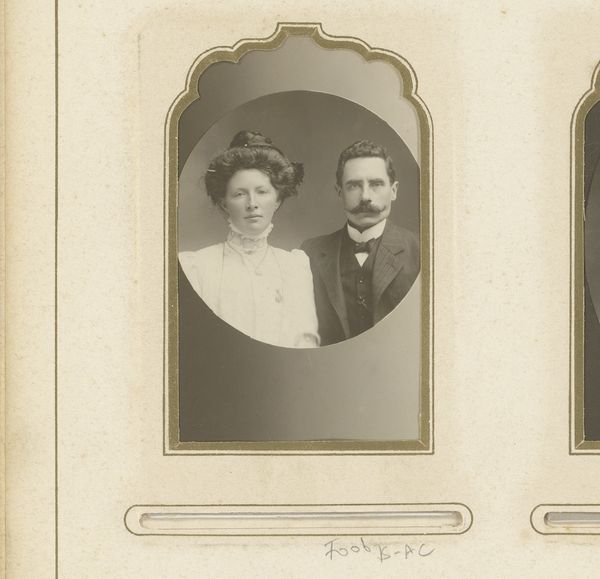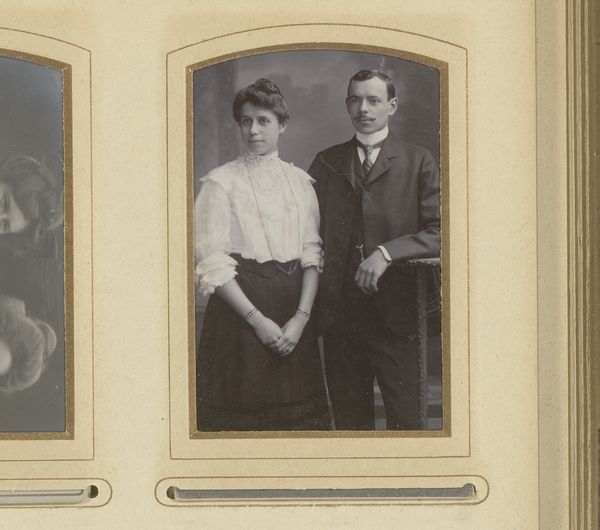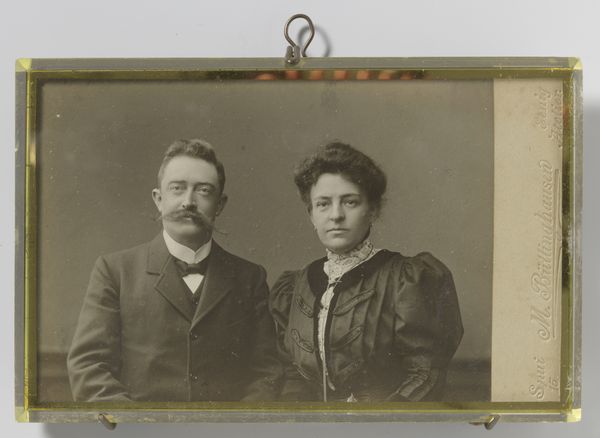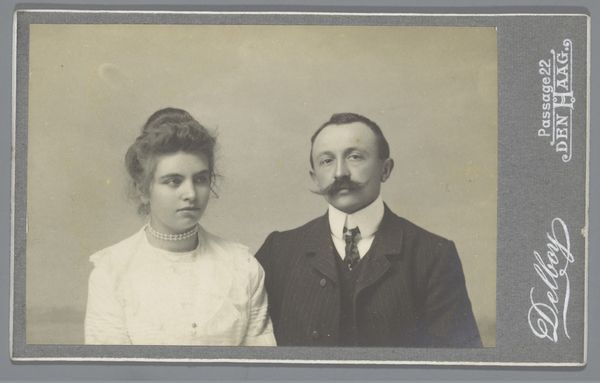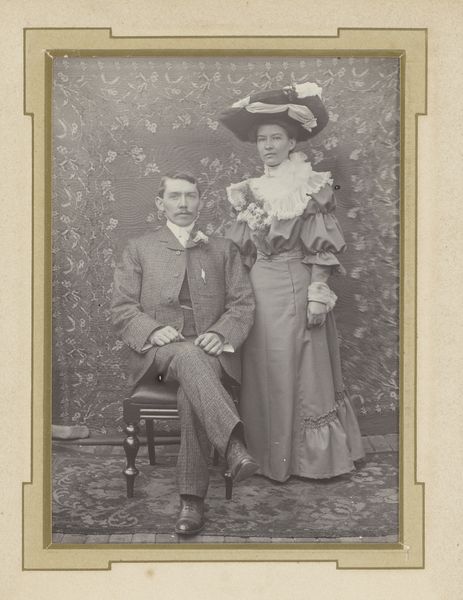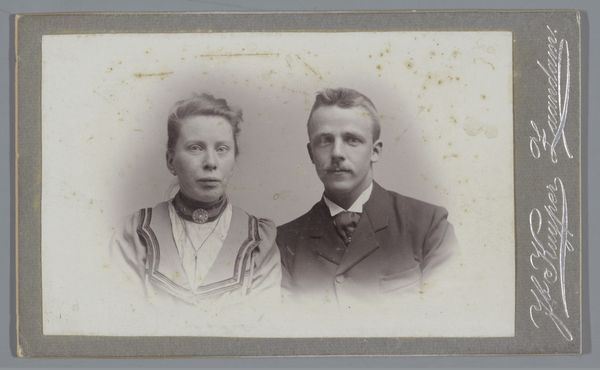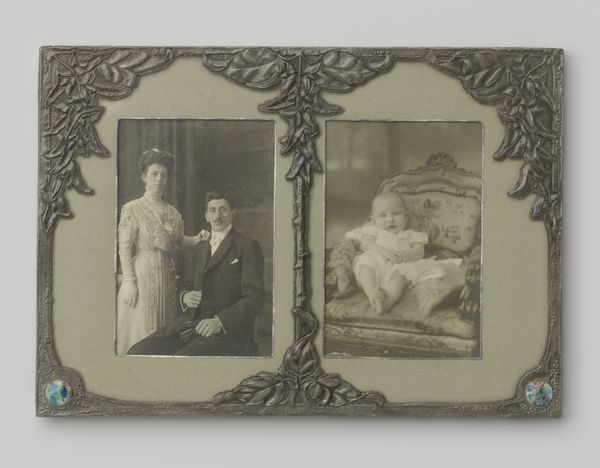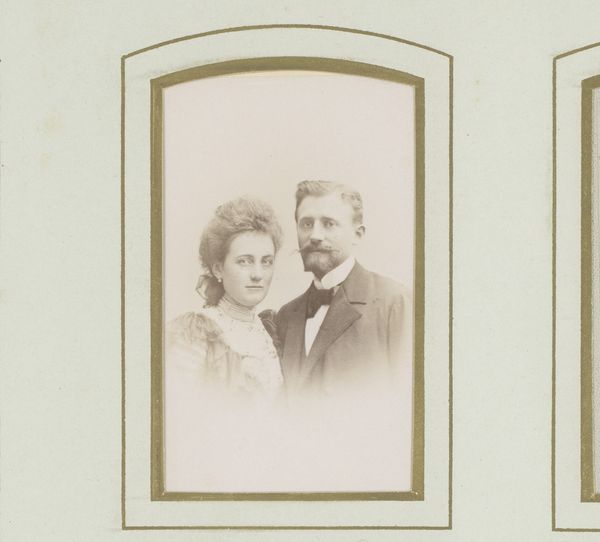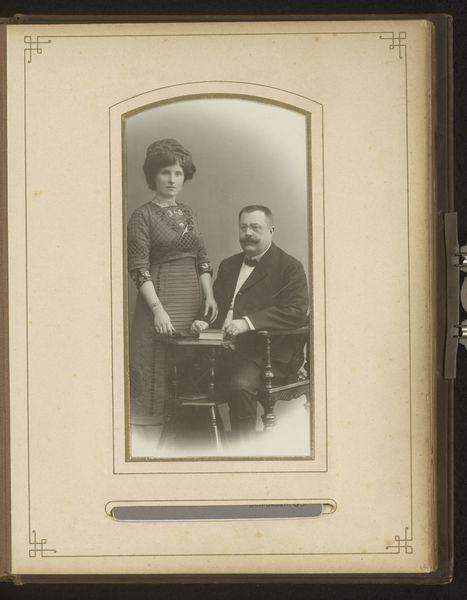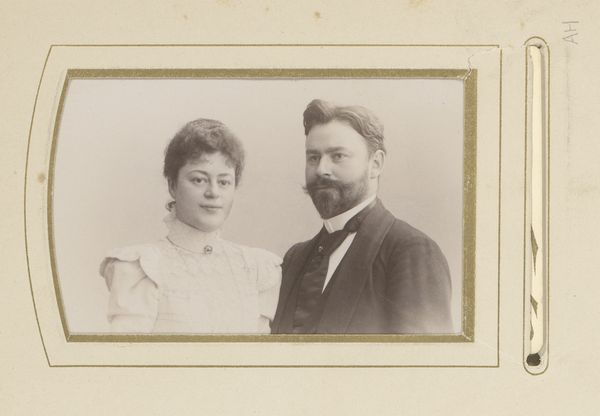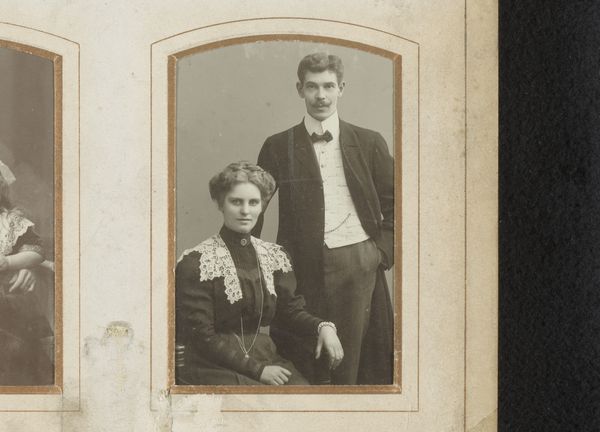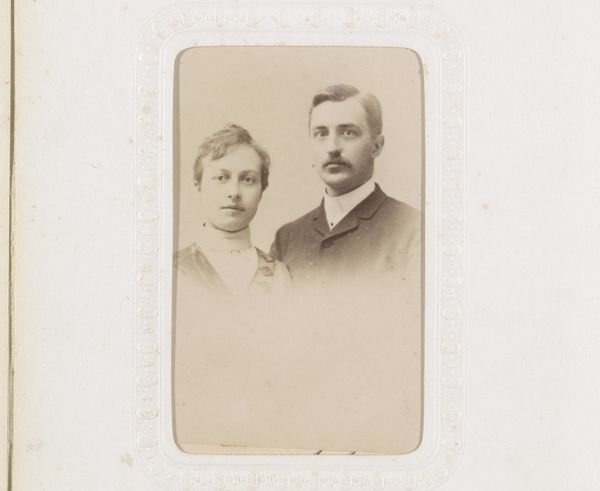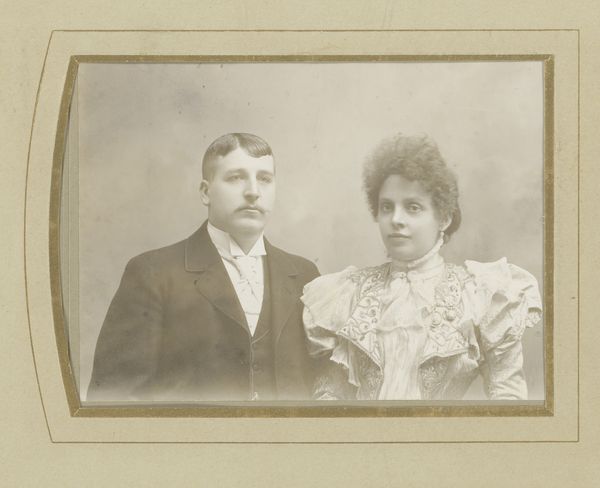
photography
#
portrait
#
pictorialism
#
photography
#
photojournalism
#
genre-painting
Dimensions: height 195 mm, width 251 mm, thickness 12 mm
Copyright: Rijks Museum: Open Domain
Curator: Before us we have two portraits of an unknown man and woman, a photographic work crafted by Ferdinand Robert Ebner between 1896 and 1905. The combined image evokes an earlier time, a different type of memory-making. What are your first impressions? Editor: The sepia tones and the formal attire project an air of seriousness, almost gravity. Yet, there’s also something romantic, if a bit stilted, in their composition, the way they mirror each other but don't quite connect. Is it intentional on the artist’s part, to frame it so solemnly? Curator: That's a great question! It does feel intentional, but maybe not to us now. As portraiture was growing during this period, there was an increased market among upper and middle-class families. These kinds of pictorialist photos are, after all, ways of marking social standing through images, and to be taken seriously. This photograph shows how a man and woman of the time are positioning themselves for history. Editor: True, and the symbolism is rich here. His sharp suit and neatly trimmed mustache speak to diligence and status, the image of the upstanding modern gentleman, even. And opposite him, she is presented as a feminine icon of delicate lace, the ornate hat, the slightly ethereal quality to her image. There is an obvious construction happening, and therefore an idea about men and women is also conveyed. Curator: Exactly, this carefully staged dichotomy reinforces gender roles. Their presentation isn’t about individual personalities, but societal ideals. We can analyze how museums perpetuate the value of works that embody particular social dynamics, how the images operate to shape public opinion. This has interesting parallels to what we see today, and in this photograph, it becomes rather palpable. Editor: I agree, these portraits really give us a glimpse into not just how these individuals wished to be perceived, but how gender and social roles were visually constructed and performed through these public presentations of oneself. A study in representation. Curator: A potent reminder that photographic portraits from this era serve not merely as depictions, but as crafted performances steeped in the social and cultural currents of the time. Editor: An encapsulation of turn-of-the-century aspiration and societal norms frozen in a duotone frame.
Comments
No comments
Be the first to comment and join the conversation on the ultimate creative platform.
